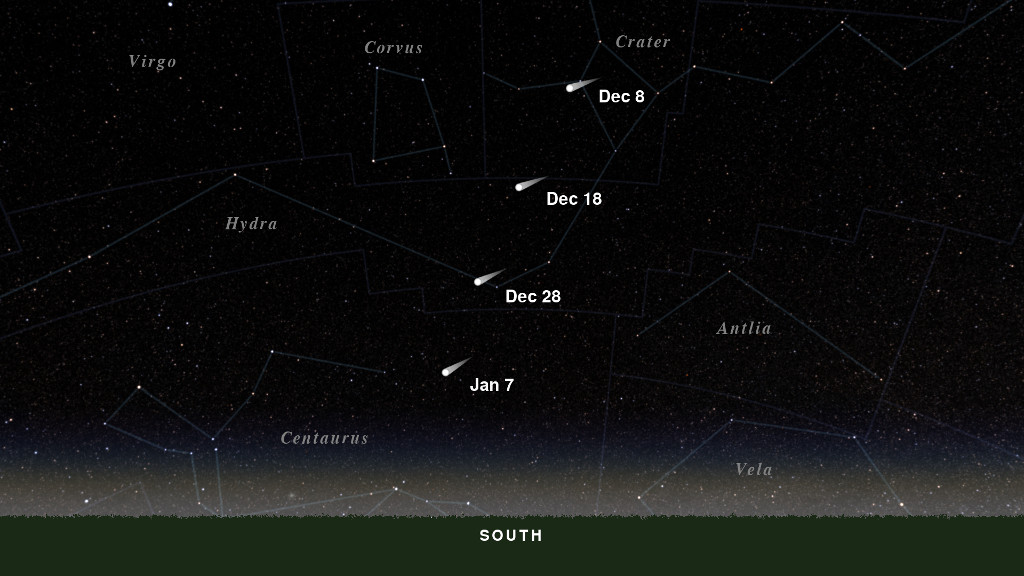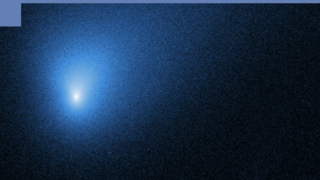Universe
ID: 4758
2I/Borisov is an interstellar comet, meaning that it came from outside our solar system. It is the first such comet ever observed, and only the second interstellar object of any kind, after the asteroid-like 'Oumuamua. The comet was discovered by amateur astronomer Gennadiy Borisov on August 30, 2019, using a 25.6-inch (0.65-meter) telescope that he designed and built specifically to hunt for small, faint objects.
The path of the comet enters our solar system from the north and crosses the ecliptic, the plane of the Earth's orbit around the Sun, on October 26, 2019. The best chance to see it is during December when it makes its closest approach to the Sun (December 8) and the Earth (December 28). The comet will then be passing through the constellations Crater and Hydra. At mid-northern latitudes, these are fairly low and to the south about two hours before sunrise. The comet will be much too dim to see without a telescope, and it'll be a challenge even in fairly large amateur instruments. Its maximum brightness is currently predicted to be only magnitude 15, about as faint as Pluto.

The Path of Comet 2I/Borisov
The path of the comet enters our solar system from the north and crosses the ecliptic, the plane of the Earth's orbit around the Sun, on October 26, 2019. The best chance to see it is during December when it makes its closest approach to the Sun (December 8) and the Earth (December 28). The comet will then be passing through the constellations Crater and Hydra. At mid-northern latitudes, these are fairly low and to the south about two hours before sunrise. The comet will be much too dim to see without a telescope, and it'll be a challenge even in fairly large amateur instruments. Its maximum brightness is currently predicted to be only magnitude 15, about as faint as Pluto.

Used Elsewhere In
Related
For More Information
Visualization Credits
Ernie Wright (USRA): Lead Visualizer
Greg Shirah (NASA/GSFC): Programmer
Ernie Wright (USRA): Programmer
Greg Shirah (NASA/GSFC): Programmer
Ernie Wright (USRA): Programmer
Please give credit for this item to:
NASA's Scientific Visualization Studio
NASA's Scientific Visualization Studio
Short URL to share this page:
https://svs.gsfc.nasa.gov/4758
Data Used:
Note: While we identify the data sets used in these visualizations, we do not store any further details nor the data sets themselves on our site.
Keywords:
SVS >> Comet
SVS >> HDTV
SVS >> Hyperwall
NASA Science >> Universe
SVS >> Interstellar Comet
SVS >> Interstellar Object
https://svs.gsfc.nasa.gov/4758
Data Used:
JPL/Horizon Orbital Ephemerides
Ephemeris - NASA/JPL - September 23, 2019
Planetary ephemerides
JPL DE421 also referred to as: DE421
Ephemeris - NASA/JPL
Planetary ephemerides
Keywords:
SVS >> Comet
SVS >> HDTV
SVS >> Hyperwall
NASA Science >> Universe
SVS >> Interstellar Comet
SVS >> Interstellar Object














